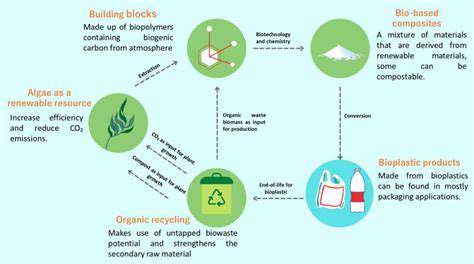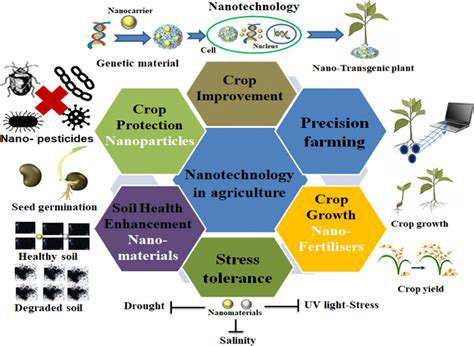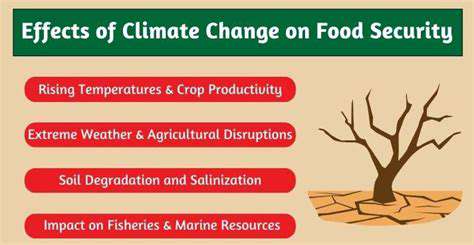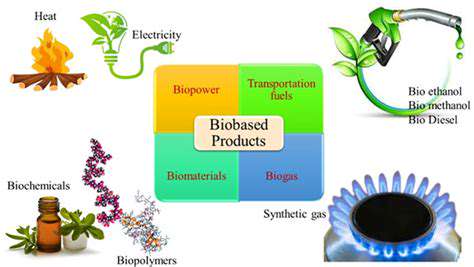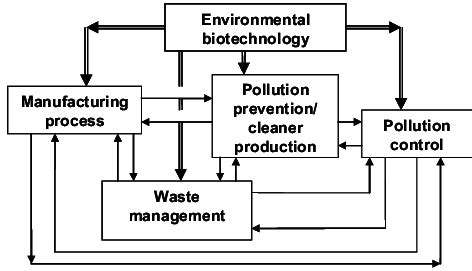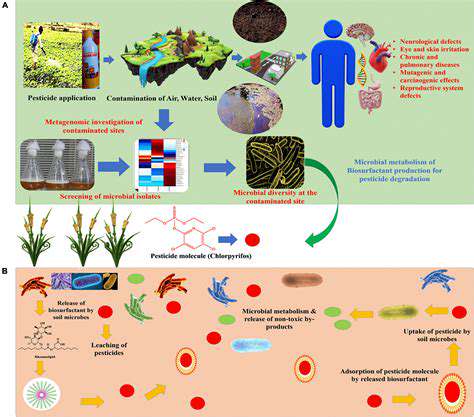Waste-Derived Biofertilizers and Soil Enrichment
Waste-Derived Biofertilizers: A Sustainable Approach
Waste-derived biofertilizers offer a compelling alternative to synthetic fertilizers, reducing reliance on finite resources and minimizing environmental pollution. These biofertilizers leverage the inherent nutrients and microbial communities within various waste streams, transforming them into valuable soil amendments. This sustainable approach fosters healthier soil ecosystems, improving nutrient availability and ultimately enhancing crop yields while reducing the environmental footprint of agriculture.
The process of creating waste-derived biofertilizers involves carefully selecting and processing different waste materials, such as agricultural residues, food waste, and sewage sludge. Specific treatment methods, such as composting, anaerobic digestion, and vermicomposting, are crucial in transforming these waste materials into stable and beneficial biofertilizers. This process not only reduces waste but also generates valuable byproducts that can further contribute to sustainable agricultural practices.
The Role of Microorganisms in Soil Enrichment
The efficacy of waste-derived biofertilizers hinges on the diverse microbial communities they harbor. Beneficial microorganisms, including bacteria and fungi, play a vital role in nutrient cycling and soil health. These microorganisms contribute to the breakdown of organic matter, releasing essential nutrients like nitrogen, phosphorus, and potassium into forms readily available for plant uptake. This enhanced nutrient availability directly impacts plant growth and overall soil fertility.
Furthermore, the introduction of these microorganisms through biofertilizers can stimulate the growth of other beneficial soil organisms, leading to a more robust and resilient soil ecosystem. This microbial diversity contributes to the overall health of the soil, enhancing its ability to withstand environmental stresses and promoting sustainable agriculture.
Nutrient Release and Plant Uptake
Waste-derived biofertilizers effectively release nutrients into the soil, making them accessible to plants. The controlled release of nutrients over time ensures consistent nourishment for the crops, minimizing nutrient loss through leaching and promoting efficient plant uptake. This controlled release mechanism is crucial for optimizing crop yields and minimizing environmental impact.
Composting and Anaerobic Digestion: Key Treatment Methods
Composting and anaerobic digestion are two prevalent techniques for transforming waste materials into biofertilizers. Composting involves the controlled decomposition of organic matter by microorganisms, resulting in a stable and nutrient-rich material. Anaerobic digestion, on the other hand, employs microorganisms in the absence of oxygen to break down organic matter, producing biogas as a byproduct, which can be used as an energy source while simultaneously generating a nutrient-rich digestate suitable for soil enrichment.
Vermicomposting and Other Innovative Approaches
Vermicomposting, a process involving earthworms, is another innovative method for creating biofertilizers. Earthworms effectively process organic waste, enriching the resulting compost with beneficial microorganisms and nutrients. Beyond these core methods, further research and development are focused on exploring other innovative approaches to enhance the efficiency and effectiveness of waste-derived biofertilizers, such as using specific microbial consortia or implementing targeted nutrient supplementation.
Economic and Environmental Benefits
Waste-derived biofertilizers offer significant economic benefits by reducing the need for synthetic fertilizers. The cost-effectiveness of these biofertilizers, coupled with their positive environmental impact, makes them a highly attractive option for sustainable agriculture. Reduced reliance on synthetic fertilizers also minimizes environmental pollution from chemical runoff and promotes a more eco-friendly approach to farming.
Future Prospects and Research Directions
The future of waste-derived biofertilizers lies in continuous research and development aimed at optimizing production processes, improving nutrient release patterns, and expanding the range of waste materials that can be utilized. Further research into the specific microbial communities within biofertilizers and their interactions with plant roots will provide valuable insights for enhancing the effectiveness of these sustainable solutions. This research will contribute to the development of more targeted and efficient biofertilizers, paving the way for more sustainable and productive agricultural practices.
Challenges and Future Prospects of Biotechnology in Waste-to-Energy

Economic Disparities and Their Impact
Economic disparities, a persistent challenge across the globe, manifest in various forms, from income inequality to unequal access to resources and opportunities. This disparity often perpetuates cycles of poverty and limits social mobility. Addressing these inequities is crucial for fostering a more just and equitable society. Failing to address them can lead to increased social unrest and instability.
The consequences of these economic divides extend beyond individual hardship. They can undermine social cohesion, hindering collective progress and potentially leading to political polarization. A focus on inclusive growth strategies, promoting education and entrepreneurship, and providing social safety nets are essential components of addressing these disparities effectively.
Technological Advancements and Societal Transformation
Rapid technological advancements are reshaping industries and impacting various aspects of society. The integration of automation and artificial intelligence, while offering potential benefits like increased productivity, also raises concerns about job displacement and the need for workforce adaptation. Preparing individuals for the evolving job market through education and reskilling programs is paramount.
Furthermore, the ethical implications of these technologies must be carefully considered, particularly in areas like data privacy, algorithmic bias, and the potential for misuse. Open dialogues and robust regulations are essential to ensure that technological advancements benefit all members of society.
Environmental Sustainability and Climate Change
The increasing urgency of environmental sustainability and climate change represents a significant challenge. The consequences of inaction, from rising sea levels to extreme weather events, pose a threat to global security and economic stability. Implementing sustainable practices across industries, promoting renewable energy sources, and fostering international cooperation are crucial steps towards mitigating the effects of climate change.
Protecting and restoring ecosystems is essential for maintaining biodiversity and ensuring the resilience of our planet. Investing in research and development of sustainable technologies and solutions is paramount. This includes fostering innovation in areas such as carbon capture and sustainable agriculture.
Global Political Instability and Geopolitical Tensions
Global political instability and escalating geopolitical tensions create a complex and uncertain environment. The rise of nationalism, protectionism, and conflicts over resources and power can disrupt global trade, hinder economic growth, and exacerbate existing inequalities. Finding peaceful resolutions to these conflicts and fostering diplomatic cooperation is vital for a more stable and prosperous future.
The interconnected nature of global challenges requires collaborative efforts to address the root causes of conflict and promote peaceful coexistence. International cooperation, diplomacy, and the promotion of shared values are necessary to navigate this complex landscape.
Social and Cultural Shifts and Adaptation
Rapid social and cultural shifts are reshaping norms and expectations across communities worldwide. Understanding and responding to these changes is crucial for maintaining social cohesion and fostering inclusivity. Promoting dialogue and understanding across diverse groups can help bridge divides and foster a more harmonious society.
Adapting to evolving social norms and cultural values requires empathy, flexibility, and a willingness to learn and grow. This involves recognizing and respecting the diverse experiences and perspectives of individuals and communities.
